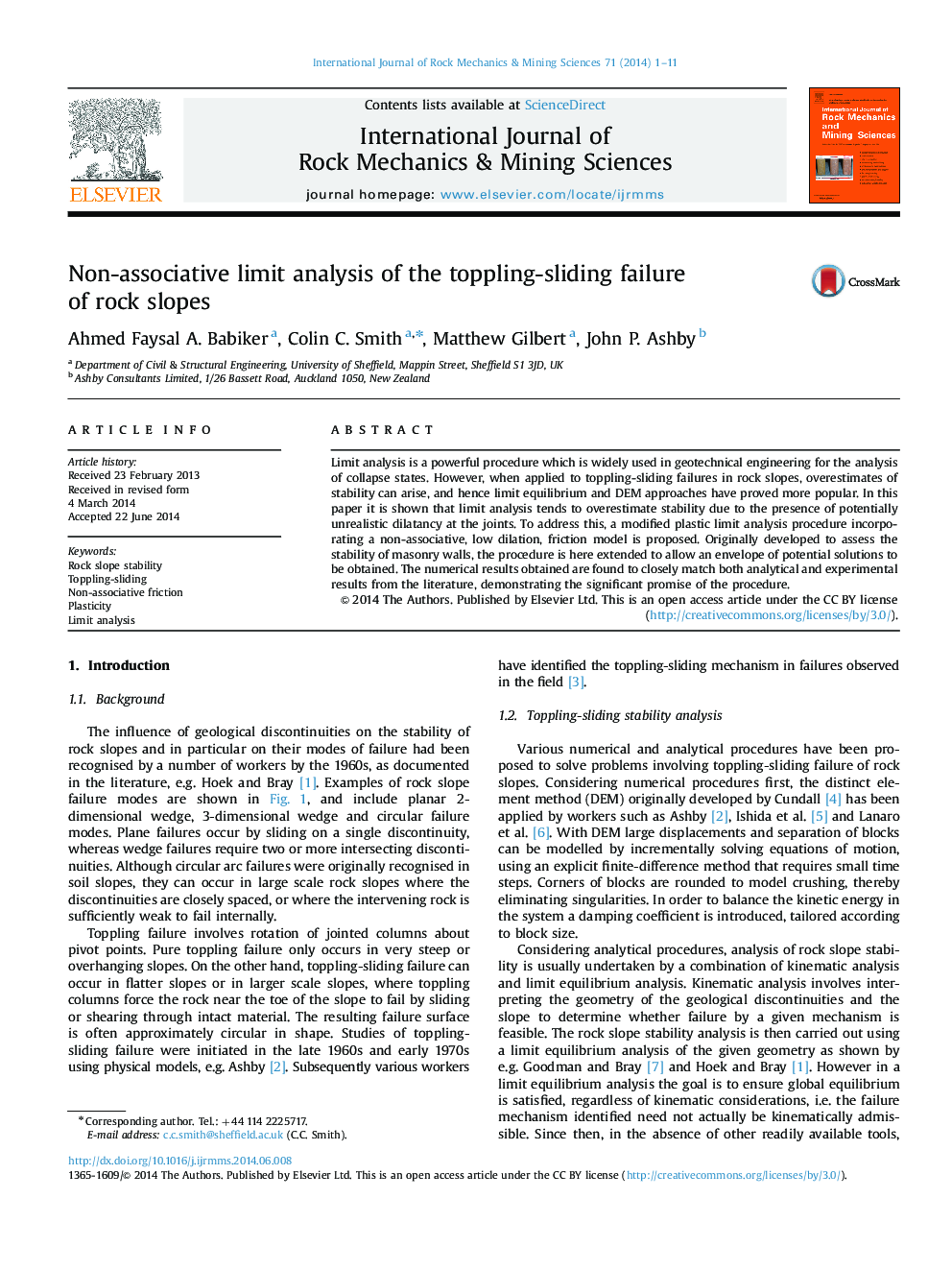| Article ID | Journal | Published Year | Pages | File Type |
|---|---|---|---|---|
| 7206688 | International Journal of Rock Mechanics and Mining Sciences | 2014 | 11 Pages |
Abstract
Limit analysis is a powerful procedure which is widely used in geotechnical engineering for the analysis of collapse states. However, when applied to toppling-sliding failures in rock slopes, overestimates of stability can arise, and hence limit equilibrium and DEM approaches have proved more popular. In this paper it is shown that limit analysis tends to overestimate stability due to the presence of potentially unrealistic dilatancy at the joints. To address this, a modified plastic limit analysis procedure incorporating a non-associative, low dilation, friction model is proposed. Originally developed to assess the stability of masonry walls, the procedure is here extended to allow an envelope of potential solutions to be obtained. The numerical results obtained are found to closely match both analytical and experimental results from the literature, demonstrating the significant promise of the procedure.
Related Topics
Physical Sciences and Engineering
Earth and Planetary Sciences
Geotechnical Engineering and Engineering Geology
Authors
Ahmed Faysal A. Babiker, Colin C. Smith, Matthew Gilbert, John P. Ashby,
